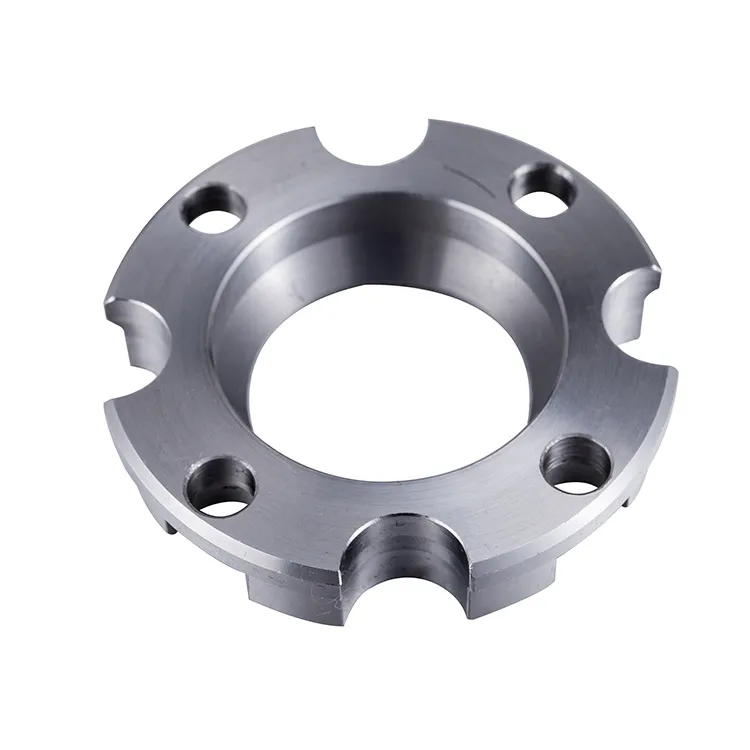CNC Machining for Telecom Parts: Precision and Efficiency for the Future of Communication
2024-10-11
The telecommunications industry has become an integral part of modern life, connecting people and businesses worldwide through a vast array of devices and networks. Behind the scenes, the technology that powers these connections relies on precision-manufactured components. CNC machining has emerged as one of the most critical manufacturing methods for producing high-quality telecom parts, ensuring that the components used in everything from cell towers to fiber optics are reliable, durable, and highly efficient.
In this blog, we’ll explore the role CNC machining plays in the production of telecom parts, its benefits, and why it’s essential for advancing communication technologies.
What is CNC Machining?
CNC (Computer Numerical Control) machining is a manufacturing process in which pre-programmed computer software controls the movement of machinery and tools. This technology can be used to precisely cut, shape, and form various materials—such as metals, plastics, and composites—into intricate parts and components. CNC machining is known for its ability to produce highly accurate and consistent parts, making it an ideal choice for industries where precision is paramount, like telecommunications.
In the context of telecom, CNC machining is used to manufacture parts for a wide range of equipment, including antennae, enclosures, housings, connectors, and brackets that ensure robust performance in various communication devices and systems.
Why CNC Machining is Essential for Telecom Parts
1. Precision and Accuracy
The telecom industry relies on components with tight tolerances to ensure optimal signal transmission and connectivity. Even minor deviations in the size or shape of a part can affect performance, leading to signal loss or interruptions. CNC machining is capable of producing telecom parts with extreme precision, often to tolerances as small as micrometers. This level of accuracy ensures that each part meets exact specifications, contributing to the overall efficiency and reliability of telecom equipment.
2. Complex Geometries
Telecom components often feature complex geometries that are difficult to produce with traditional manufacturing methods. CNC machines, equipped with advanced multi-axis capabilities, can handle intricate designs with ease. Whether it’s producing finely detailed parts for fiber optic connectors or machining complex heat sinks for electronic components, CNC technology allows manufacturers to achieve the required level of complexity while maintaining consistency across large production runs.
3. Material Versatility
The telecom industry uses a wide variety of materials, including metals like aluminum, stainless steel, and brass, as well as high-performance plastics and composites. CNC machining is highly versatile and can work with nearly any material, allowing manufacturers to choose the best material for each specific telecom part based on its application and environmental demands. For example, CNC-machined aluminum parts are commonly used in telecom due to their lightweight properties and corrosion resistance, while plastic components may be chosen for insulation or moisture resistance.
4. Rapid Prototyping
As telecom technologies evolve, the need for rapid innovation becomes crucial. CNC machining is ideal for prototyping new telecom parts quickly and accurately. Engineers can create a digital model, upload it to the CNC machine, and produce a functional prototype in a matter of hours. This capability speeds up the development process, enabling faster testing and refinement of new designs before moving to mass production.
5. Cost-Efficiency
For many telecom applications, the ability to produce parts efficiently without sacrificing quality is key. CNC machining offers a cost-effective solution for manufacturing both low and high-volume production runs. Once a design is programmed into the CNC machine, it can be replicated multiple times with minimal manual intervention, reducing labor costs and the potential for human error. Additionally, CNC machining’s high level of automation minimizes material waste, further driving down production costs.
Telecom Parts Manufactured Using CNC Machining
1. Antenna Components
CNC machining is used to create precision parts for telecom antennas, including brackets, waveguides, and mounting hardware. These components must withstand harsh outdoor conditions, and CNC-machined parts ensure durability and consistent performance.
2. Fiber Optic Components
The fiber optic industry demands extreme precision, especially for parts such as connectors, adapters, and couplings. CNC machining allows for the tight tolerances required to minimize signal loss and ensure optimal performance in fiber optic systems.
3. Housings and Enclosures
Telecom equipment often requires protective housings or enclosures to safeguard delicate electronics from environmental factors like moisture, dust, and temperature fluctuations. CNC machining can produce these enclosures in various materials, providing the necessary protection while maintaining compact designs.
4. Connectors and Switches
CNC machining is ideal for producing small, intricate connectors and switches that are integral to telecom systems. These parts require high precision to ensure reliable connections between cables and devices.
5. Heat Sinks
Telecom systems generate significant amounts of heat, and CNC-machined heat sinks are critical in dissipating this heat to prevent damage to sensitive electronics. CNC machines can produce complex fins and channels that maximize heat dissipation.
Benefits of CNC Machining in the Telecom Industry
1. Durability and Reliability
CNC-machined parts are known for their high-quality finishes and structural integrity. The precision and repeatability of CNC machining mean that telecom components are durable and reliable, even in demanding environments.
2. Customization
CNC machining allows for easy customization of telecom parts to meet specific design requirements. Whether you need a unique part for a specialized application or a variation of an existing component, CNC machining makes it possible to tailor the design without compromising accuracy.
3. Scalability
CNC machining is highly scalable, making it suitable for both small production runs and mass production. Once the design and programming are in place, CNC machines can produce thousands of identical parts with minimal adjustments, ensuring consistency across all units.
4. Quality Control
One of the major advantages of CNC machining is the strict quality control it offers. With automated processes and real-time monitoring, manufacturers can ensure that each part meets the highest quality standards, reducing the risk of defects or inconsistencies in telecom systems.
The Future of CNC Machining in Telecom
As the demand for faster, more reliable communication networks continues to grow with the expansion of 5G and IoT (Internet of Things) technologies, the need for precision-engineered telecom components will become even more critical. CNC machining will continue to play a pivotal role in the production of high-performance telecom parts, offering the flexibility, precision, and efficiency required to meet the evolving needs of the telecom industry.
Conclusion
In the fast-paced and technologically driven world of telecommunications, precision and reliability are paramount. CNC machining provides the ideal solution for manufacturing telecom parts that meet the high standards required by the industry. From antenna components to fiber optic connectors, CNC technology ensures that each part is produced with the utmost accuracy and quality, helping to keep the world connected.
With its versatility, cost-effectiveness, and ability to produce complex parts, CNC machining is set to remain a vital tool for the telecom industry, driving innovation and supporting the development of future communication technologies.



